Your Cart is Empty
Greek forterrible lizard, dinosaurs are giant creatures that once dominated our planet hundreds of millions of years ago. Boasting large, long bodies with upright limbs and hundreds of huge sharp teeth, dinosaurs are one of the most fascinating yet mysterious species to have ever existed on Earth.
Since thediscovery of dinosaur fossils in 1842, archeologists and paleontologists from all around the world have put in major efforts to learn more about these organisms. Over the next century, details related to their characteristics and circumstances surrounding their extinction have been heavily researched. Through the excavation and subsequent study of dinosaur remains, many conclusions have been reached on their attributes. These attributes change depending on the type of dinosaur.
In this article, we'll focus on one of the most important features: Dinosaur teeth. While some species like Ornithomimus and Gallimimus did not have teeth at all, others like Tyrannosaurus Rex sported over 50 sharp canines the size of bananas. There are even dinosaurs that have hundreds of teeth!
You will discover what dinosaur has 500 teeth as well as other top 10 fierce-toothed dinosaurs that have walked our Earth.

The answer to the question of what dinosaur has 500 teeth is the sauropod dinosaur Nigersaurus. Nicknamed theMesozoic Cow due to its strange physical and behavioral resemblance to cows, the Nigerrsaurus is one of the most unorthodox dinosaurs to have roamed the Earth.
The French paleontologistPhillipe Taquet first discovered the fossil remains of this dinosaur on an expedition to West African Regions between 1965 and 1972. Meaningreptile of Niger, the name Nigersaurus was coined after the location of its fossil’s discovery in the Sahara Desert in the modern-day Republic of Niger. His discoveries were built upon the 1999-2000 excavations of American paleontologist Paul Sereno, which were successful in finding further fossil remains.
This animal lived about 110 million years ago, making it one of the oldest dinosaurs ever discovered. It measured about 30 feet long and weighed approximately 4 metric tons, which translated to the size of an African Elephant in today’s terms. A plant-eating herbivore, the Nigersaurus’ diet mainly consisted of soft plants like ferns, angiosperms, and horsetails.
The Nigersaurus is most widely recognized for its exceptionally wide mouth filled with over 500 small teeth. The broad nature of its snout is often compared to that of a cow, measuring longer than the back of its head.
However, being over 500 in number is not the only interesting thing about this sauropod’s teeth. The skull of the Nigersaurus was one of the first to be seen withdental batteries, or vertically stacked columns of teeth that replaced each other as required. 68 columns of teeth lined the upper jaw and 60 columns on the lower jaw. Once a tooth was lost or worn out, the one behind it would take its spot, making sure that the dinosaur had a sustainable supply of teeth throughout its lifetime.
Unlike other dinosaurs who had teeth going very far back into their mouth, this sauropod’s teeth were all positioned at the forefront of its muzzle. Its teeth were also packed closely together in neat columns. This allowed it to grind and mash vegetation easily and efficiently.
With teeth positioned at the front of its wide snout, coupled with its relatively short neck for a sauropod, meant that the Nigersaurus would feed at ground level. Its strategy of low-browsing feeding consisted of scooping soft vegetation in its broad mouth, slicing it with its 30 cm long shears.
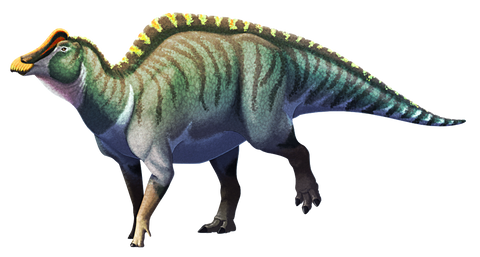
Also known asduck-billed dinosaurs, the Hadrosaur was a herbivorous dinosaur that roamed parts of Europe, Asia, and North America in the Cretaceous period approximately 75 to 65 million years ago. The name duck-billed dinosaur comes from the unique structure of their faces, which featured flattened long snouts and big beaks.
In 1858, a near-complete set of dinosaur fossil remains was discovered in a marl pit in Haddonfield, New Jersey. These fossils were the findings of Victorian fossil enthusiast Parker Foulk. Upon further research, these bones were identified as that of the Hadrosaur, a herbivorous dinosaur with up to 300 teeth in its strong jaws. These bones are on display at the Academy of Natural Science in Philadelphia.
Standing at about 30 feet tall with a weight between three and four tons, the Hadrosaur was a very strong dinosaur, capable of standing on two legs. Their strength coupled with their standing ability allowed Hadrosaurs to reach higher places for food. The size of a hadrosaur can be compared to that of a modern-day large elephant.
As for hadrosaur teeth, they are some of the most interesting dental discoveries in the world. The dental system of the Hadrosaur is unlike similar reptiles of its time. The teeth of a hadrosaur were positioned very far back into the mouth, positioned in parallel stacks so closely confined together that they are practically fused. This network of teeth proved very powerful, allowing the grinding and shearing of even the toughest of plant materials.
Hadrosaur teeth are often compared to human teeth by researchers due to their characteristic of not being attached to the jaws. However, unlike human teeth which have nerve endings and blood vessels at their core,hadrosaur teeth were made of hard tissue.
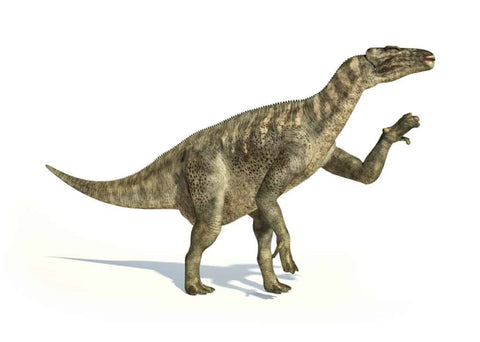
The Iguanadon was a herbivorous dinosaur that existed in the Late Jurassic and Early Cretaceous periods roughly 160 to 100 million years ago. The fossil remains of these large reptiles were found across many continents, including parts of Australia, Asia, North America, North Africa, and Europe. With up to 200 teeth in its powerful jaws, the Iguanadon was one of the most large-toothed dinosaurs ever discovered.
Measuring a length and height of 30 meters and 2 meters respectively, Iguanadons were massive animals that weighed up to four tons! They were first discovered in Sussex in 1822 by husband-wife duo Mary Ann Mantell and Dr. Gideon Mantell, an English geologist and physician. The teeth of the Iguanadon were the first fossil to be unearthed, found still embedded in rock.
30 years later, in 1852 quarry owner William Harding Bensted discoveredfossil remains of a dinosaur’s skeleton as a result of an accidental limestone explosion. Among his findings were limb bones, vertebrae, pelvis fragments, and parts of the ribs. Identified as Iguanodon fossils, they provided greater clarity into the body structure of the reptile.
After realizing similarities in tooth structure with that of iguanas, researchers concluded that this dinosaur was likely a supersized version of the living lizard. The name Iguanadon is a reference to the dinosaur’s iguana-like teeth, which lined its jaw in neat rows.
The Iguanadon uniquely had two types of teeth:spoon-shaped and chisel-like, both serving a different purpose. The former were used for snipping vegetation off branches while the latter were used to grind up coarser plants like cycads. Similar to the Nigersaurus, the dinosaur with 500 teeth, the Iguanadon also had dental batteries. These were replaceable teeth that lasted throughout their lifetime.
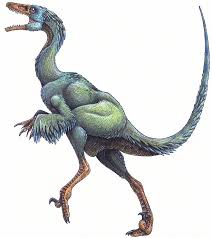
Often dubbed thestiff-tailed Dromaesaur,the Stenonychosauras was an omnivorous dinosaur that inhabited parts of Canada during the Late Cretaceous period about 65 million years ago. The name Stenonychosaurs meansnarrow-claw lizard, which aptly describes the dinosaur’s small, bird-like physique. Although small, the dinosaur had an impressive 122 teeth in its compact jaw.
There is an ongoing debate between paleontologists on the name of this dinosaur species, with some classifying it asTroodon. Troodon was the name first given by American paleontologist Joseph Leidy to the fossil tooth found in 1855 in Montana, United States. Decades later, similar fossil remains were discovered in Dinosaur Park Formation in Alberta, Canada, which were given the name Stenonychosaurus. As a result, some researchers use Troodon while others prefer using the newer name Stenonychosaurus.
With a height of up to 10 feet and a weight of up to 110 pounds, the Stenonychosaurus was a petite dinosaur. However, it had very large eyes set front facing on its face, which is indicative of it havingadvanced binocular vision. Its diet was either carnivorous or omnivorous, as is suggested by the wear facets and serrations on its sharp teeth, which could total up to 122 in number.
One interesting fact about Stenonychosaurus is that it had an unusually large brain size for a dinosaur of its build. This, coupled with other distinguished features like grasping hands, binocular vision, and forward-facing eyes, suggest that the Stenonychosaurus was a highly intelligent reptile.
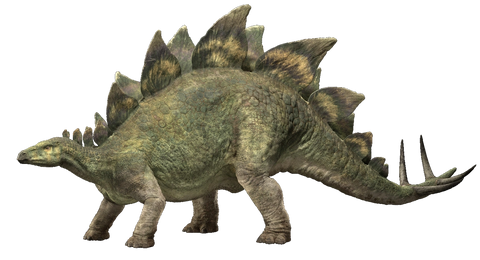
The Stegosaurus is one of the most widely recognized dinosaurs because of its iconic back plates. It lived about 155 to 150 million years ago in the Late Jurassic period in areas encompassing Colorado, Utah, and Wyoming in the United States, as well as parts of Europe.
The first Stegosaur was discovered by dinosaur pioneer Richard Owen in the United Kingdom in 1874. Just a couple of years later, Othniel Charles Marsh found more fossil remains in theRocky Mountains in the United States, and coined the term Stegosauras, meaningroof lizard.
This was a massive dinosaur, reaching lengths and heights of up to 30 and 14 feet. The most distinct feature of the Stegosaurus was its large, bony, back plates which lined its entire body. It also had a thagomizer tail, which featured four spikes used for defense against predators as well as the regulation of body temperature.
In comparison to the rest of its body, the animal had a very small head and short neck. It also had avery small brain, about the size of a plum, which is why it is often referred to as thedumb dinosaur in popular culture.
A herbivore that primarily consumed horsetails, cycads, fruits, and conifers, the Stegosaurus had about 78 small teeth that were triangular with a flat surface. This allowed the dinosaur to grind and process its food easily. Unlike other herbivores, the Stegosauras’ teeth were not close together, indicative of a vertically moving jaw.
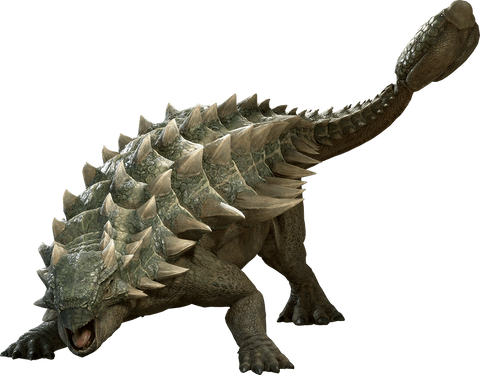
Greek forfused lizard, Ankylosaurus was a giant herbivore dinosaur that lived in North American regions in the late Cretaceous period approximately 70 million years ago. Often compared to a military tank, the Ankylosaurus was anarmored animal, sporting spiked bony plates all through its short body.
The first Ankylosaur ever found was in 1906 by American paleontologist Barnum Brown on an American Museum of Natural History expedition to Montana. His team discoveredfossil remains of vertebrae, ribs, scapula, osteoderms, and portions of the skull in the Hell Creek Formation. Since then, bones of the Ankylosaurus have been found on every continent in the world except Africa, indicating that this dinosaur was an abundant species.
The Ankylosaurus was not small by any means, with a total length of up to 33 feet and an approximate weight of four tons. It had a flat, square, head and short legs. Its back, flanks, and skull were covered in thick armor in the form of flat bony plates. This, along with rows of bony spikes served as natural armor for the dinosaur. The tail of the Ankylosaurus was also uniquely clubbed at the end where plates fused. The only weak spot of this beast was its soft broad underbelly, but attacking that area would require extensive work.
Despite its large size and menacing characteristics, the Ankylosaurus was a herbivore that only consumed low-lying plants like ferns and angiosperms. This is reflected in the shape of its skull, which had a narrow beak at the end to allow for easy stripping of plants.
The Ankylosaurus also had72 small, leaf-shaped teeth, which came in handy to chomp fruits and invertebrates. Its teeth were thin and had multiple cusps that looked like serrations on the surface. From its swollen base to the edge, its teeth measured less than half an inch long. The tooth structure of the Ankylosaurus was well adapted to its dietary requirements.
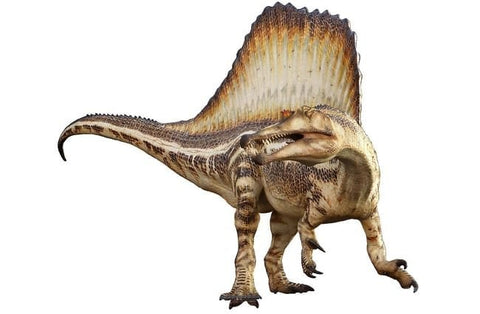
The onlysemi-aquatic piscivore on this list, the Spinosaurus was a large meat-eating dinosaur that lived in the Late Cretaceous Period. It inhabited parts of North Africa about 99 to 94 million years ago. The name Spinosaurus meansspined reptile,referring to its large sail-like feature created by vertebral spines on its back.
Partial skeletal fossils of this dinosaur were first found by German paleontologist Ernst Stromer and his assistant Richard Markgraf in 1915 from the Bahariya Oasis in western Egypt. However, these original fossils were destroyed in 1944 when the Munich museum keeping them was bombed during World War II, along with Stromer’s other life work.
For many subsequent decades, the descriptions found in Stromer’s notes were the only information available about the Spinosaurus. It wasn’t until the 1990s and 2000s that additional fossil remains of this dinosaur were found in Tunisia, Morocco, and Algeria.
The Spinosaurus was oftencompared to a crocodile due to its long narrow skull and wide nostrils that were near its eyes rather than snout. It was a long and heavy dinosaur, weighing between 13 and 22 tons and measuring 14 to 18 meters in length. This makes the Spinosaurus the largest carnivorous dinosaur ever discovered.
The teeth of the Spinosaurus were conical and smooth, rather than sharp and curved like other meat-eaters. It housed about 64 teeth in its long jaws, with interlocking between upper and lower teeth similar to that of crocodiles. This has led researchers to believe that the Spinosaurus consumed fish.
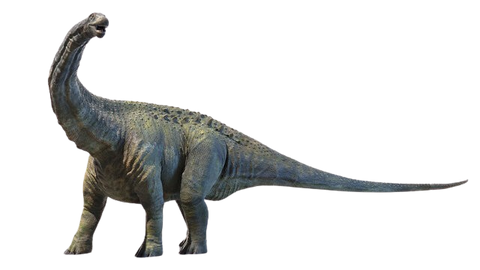
The Apatosaurus was a sauropod dinosaur that lived in the Late Jurassic Period some 150 million years ago in an area now known as North America. Other dinosaurs that lived in the same period as the Apatosaurus include the Stegosaurus, Diplodocus, and Allosaurus.
This dinosaur was first discovered in the 19th century in the foothills of Colorado by naturalist Arthur Lakes. Two years later, in 1877 more Apatosaurus fossil remains were found in Wyoming by O.C Marsh, an American paleontologist. All remains of this dinosaur found have been concentrated in the Morrison Formation, a sedimentary rock sequence in modern-day Oklahoma, New Mexico, Utah, Wyoming, and Colorado.
The Apatosaurus measured a length of up to 75 feet and estimated weight of 35 tons, making it one of the mostmassive terrestrial animals to have ever existed. Its body shape is similar to that of other sauropods, with a long, large neck and powerful whip-like tail. In addition to being giant, the Apatosaurus also sported an impressive 45 to 60 teeth in its large jaw.
As a sauropod, the Apatosaurus was a herbivore, exclusively consuming a plant-based diet. Its teeth were chiseled, small, and peg-like, which made it easier to strip off vegetation. Its teeth were replaceable, and continuously replenished throughout the dinosaur’s lifetime.
Interestingly, this dinosaur did not chew its food, preferring to swallow its meals whole instead. The food consumed would then sit in its stomach, fermenting and digesting with time.

Often abbreviated as T. Rex, the Tyrannosaurus Rex was one of the mostbrutal predators in history. A fierce carnivore, this dinosaur ruled over the lush river valleys of western North America about 68 million years ago in the Cretaceous Period.
The first fossil bones of the Tyrannosaurus Rex were found in1902 by famed fossil enthusiast Barnum Brown in Hell Creek, Montana. While most subsequent findings were concentrated in parts of North America, there have also been a few dinosaur fossils unearthed in Mongolia.
Tyrannosaur Rex meansking of the tyrant lizards.It had a massive muscular body that measured up to 40 feet long and weighed up to eight tons. It was a two-legged dinosaur with distinctly small arms and a powerful long tail. The T. Rex was a scavenger, preying on other dinosaurs and animals with no mercy.
The jaw of this dinosaur housed 60 razor-sharp teeth of massive sizes measuring up to 12 inches in length. Depending on mouth placement, the texture and position of the teeth varied. For example, front teeth were more chiseled and closely packed, allowing for easy gripping and pulling of prey. In contrast, the side teeth were more loosely spaced, ideal for ripping flesh. If a tooth was lost during combat, another one would take its place.
The jaw of the T. Rex was incredibly powerful, exhibiting a force of up to 10,000 pounds per square inch. To prevent itself from overheating due to the massive energy used in chomping on prey, the dinosaur hadcooling vents in its head. Its powerful sense of smell also aided in hunting for its next target.

Although small in size, the carnivorous theropod Velociraptor was one of the most ferocious dinosaurs of the late Cretaceous period. Hunters by nature, these vicious bird-like creatures roamed parts of central and eastern Asia between 75 and 70 million years ago. Other dinosaurs that lived alongside the Velociraptor are the Tyrannosaurs Rex, Spinosaurus, and Triceratops.
This historic theropod was found on 11 August 1923 at adig site in the Gobi Desert in Outer Mongolia as part of a fossil expedition launched by the American Museum of Natural History in New York. Associate paleontologist Peter Kaisen is credited with having discovered the fossiled skull and toe claw of the Velociraptor. At the time of discovery, this part of the world was a remote area that could only be accessed by car and cavalry, making the expedition almost as dangerous as the dinosaur itself.
The body of the Velociraptor was designed forspeed and agility to aid its predatory lifestyle. It averaged about 6 feet in length and weighed less than 50 pounds. It had a long and narrow head with a flat snout and sickled claws on each hindfoot.
Velociraptors had about 26 to 28 blade-like teeth that were widely spaced in their jaw. Riddled with sharp serrations, these teeth were ideal forripping the flesh of enemies apart. Although sharp, these teeth were not very big, measuring just ¼ inches in length.
Depending on their jaw placement, the teeth of a Velociraptor were of different shapes and sizes. Teeth at the front of the mouth were sharper and aided cutting, while teeth in the back were stronger and used to crush food. These teeth were replaceable, constantly replenishing themselves throughout the life of the dinosaur.

The Nigersaurus is one of the most enigmatic dinosaurs ever discovered by scientists due to its unusual characteristics. The following are some fun facts about this dinosaur.
1 - Weirdest Dinosaur Ever Seen:
The Nigersaurus is known for its strange jaw shape that is unlike any other dinosaur. Housing 500 teeth in 50 vertical columns, the broad and wide jaw of this dinosaur has been compared to a vacuum cleaner. Even the Renowned paleontologist Paul Sereno has been quoted saying it is the weirdest dinosaur he has ever seen in his career.
2 - It Features Were a Mystery for Decades:
Although the fossil remains of the Nigersaurus were discovered in the mid-20th century, it was until the late 2000s that its features officially came to light. This is because the bones of the specimens found were both incomplete and not in the best condition.
3 - Its Eyes Were Cartoonish:
The Nigersaurus specimens found showed that the sauropod had extremely large eye sockets.
4 - It Was Short-Necked And Long-Necked At the Same Time:
Sauropods are characterized as herbivore dinosaurs that have extremely long necks like the Apatosaurus and Gigantosaurus. However, the Nigersaurus’ neck was not as long, measuring about 30 feet from head to shoulders.
5) Nigersaurus Hatchlings Have Been Discovered:
Fossilized parts of a baby Nigersaurus have been found by Paul Sereno and his team during their expeditions in 2000. This tiny creature was about a year from hatching when discovered, and was so small it would fit on a silver dollar.

Despite being hundreds of millions of years old, dinosaur teeth often remain remarkably well-preserved, making them among the most immaculate fossils ever discovered. Their pristine condition proves even more useful for scientific research, as the teeth of a dinosaur canreveal a lot about a dinosaur’s attributes such as diet, size, and survival adaptations.
Depending on the shape, sharpness, and size of a tooth, assumptions can be made about the lifestyle of the dinosaur being studied.
The following are some of the insights teeth give into dinosaur’s behavior:
As teeth are the main tool for processing food, they can provide indications about the dietary patterns of dinosaurs. For example, flat teeth and grinding indicate a plant-based herbivorous diet, as the shape would allow the mashing of vegetation. On the other hand, serrated and sharp canines suggest the dinosaur was a meat-eating carnivore, with teeth that easily rip flesh apart.
Microscopic scratches in the form of microwear on the tooth’s surface can also provide insight into the feeding habits of dinosaurs. This is because the textures of food consumed by dinosaurs will leave certain markers on teeth. If microscopic scratches on the teeth are coarse, with large pits and wide abrasions, it can be assumed that the dinosaur had a more gritty diet. Smaller scratches devoid of large dents can signal a soft diet of plants and vegetation.
Studying various teeth markers on dinosaur teeth can help distinguish behavioral patterns between different dinosaur species. This can allow further classification of dinosaurs into predators, scavengers, and grazers.
For example, the teeth of theMorrocan raptor are often found lodged in the fossilized remains of their prey, an indication that the dinosaur had an aggressive scavenging nature.
Other factors like tooth positioning and arrangement can also provide insight into the hunting strategies of dinosaurs. Teeth that are placed far back into the jaw are likely to be used to crush food passively, while conical, large teeth at the front of the mouth may indicate grasping of prey.
Although the Nigersaurus answers the headlining question of what dinosaur has 500 teeth, it is not the dinosaur with the most teeth ever discovered. Researchers have found dinosaurs that may have had even more teeth than the Nigersaurus, including theTriceratops which had up to 800 teeth as well as some duck-billed dinosaurs that had up to 960 cheek teeth.
As one of the most well-preserved fossils, teeth can give us clues about the dietary habits, social behaviors, food chain placement, and survival strategies of dinosaurs. This brings us one step closer to uncovering the many secrets of these ancient prehistoric creatures that roamed the planet we call home hundreds of million years ago.
FAQs
The theropod Berthasaura leopoldinae had the distinct feature of being toothless from birth, an oddity among similar carnivores. This dinosaur was discovered in the Pterosaurs’ Cemetery in modern-day Brazil. One of the only dinosaurs to be named after a woman, the Berthasaura lived approximately 80 million to 70 million years ago in a desert area among other theropods.
The predatory dinosaur Tyrannosaurus Rex is credited with holding the record for the longest tooth ever found. Measuring 12 inches in length from root to tip, this tooth was discovered in the Hell Creek Formation in Montana, United States.
While it's challenging to determine the exact age of a dinosaur from its teeth alone, growth rings similar to those in tree trunks can sometimes be observed in dinosaur teeth. These rings can provide insights into the growth rate and age at the death of the dinosaur.
Yes, several dinosaurs, notably the Hadrosaurs and certain theropods like the Oviraptor, had beaks. These beaks were often toothless and adapted for cropping vegetation or, in some cases, for omnivorous diets.
Many dinosaurs continuously replaced their teeth throughout their lives. As an old tooth wore down or was lost, a new tooth would grow to replace it. This process varied among species, with some having faster replacement rates to suit their dietary needs.
Some modern animals, like crocodiles and monitor lizards, have teeth that resemble those of certain dinosaurs, particularly theropods. This similarity is due to convergent evolution, where unrelated species develop similar traits to adapt to similar environments or diets.
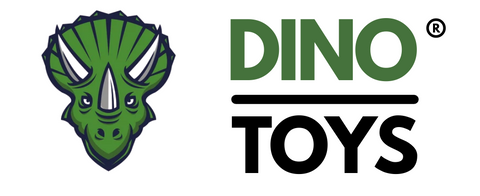
Comments will be approved before showing up.
